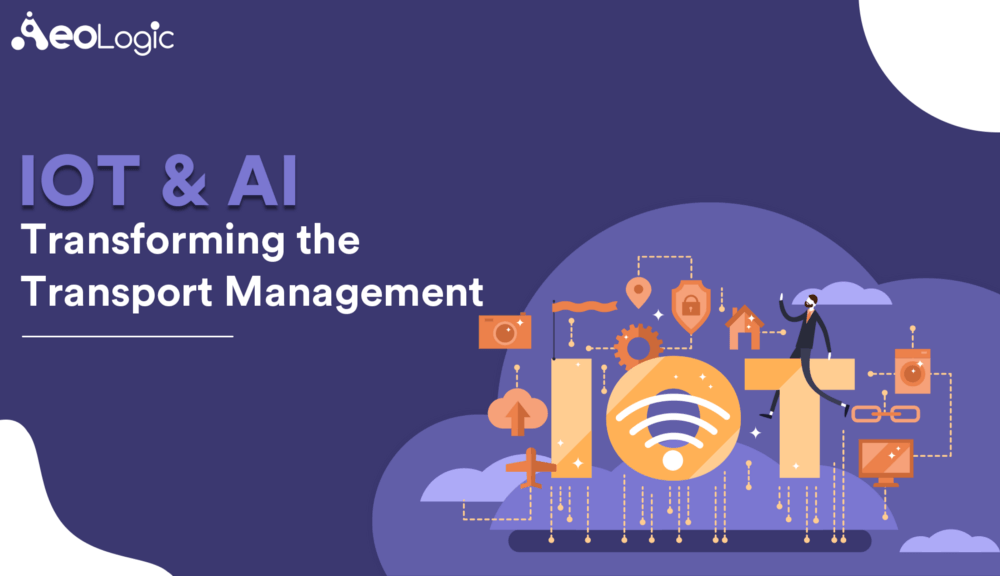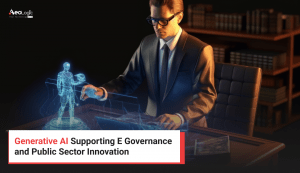The time that we are living in, the present, is the most technically advanced it has ever been. With these new technologies come advancements in every area of business, from customer-facing technologies to predictive inventory to transportation management.
“Smart tech” is transforming the way companies do business — including an impact on your company, whether you realize it or not. Businesses are very swiftly implementing AI and IoT to streamline operations and optimize data. This technology has already entered with the forefront in major cities, and it’s quickly making its way into transportation management as well.
How will AI and IoT transform transportation management? And what does this mean for your business and clients?
What are IoT and AI?
Artificial intelligence (AI) is when machines reflect a learning pattern, so they’re able to grow their knowledge through learning. These machines recognize patterns and collect data to analyze, predict, and track future changes. AI helps automate learning to make smarter, safer, faster decisions in businesses.
According to Stanford’s Artificial Intelligence and Life In 2030 — One Hundred Year Study, AI is going to have a massive impact on all forms of infrastructure. From city public transportation to rural sewage systems to transportation management, AI is able to collect and process data at a rate faster than humans can. This has a major impact on the way businesses understand data and create strategies.
IoT refers to the Internet of Things. This is basically the network of all devices that are connected to exchange data. Connected devices include vehicles, home appliances, electronics, shipping boxes, robots, and even credit cards and many more. The limits for connectivity are endless. In fact, there are currently 17 billion connected devices, and it’s predicted that this will rise to 50 billion in the next two years.
IoT is the wave of the future with regards to transportation management. Analysts predict that 70–75% of new cars will feature IoT connectivity by 2022. And this is only with commercial use; in the shipping and logistics sector, connectivity could reach as high as 90%. This is because AI and IoT are able to optimize processes in ways that companies could never before have imagined.
How Does it Benefit us?
Autonomous Vehicles
Autonomous and semi-autonomous vehicles have already driven onto the transport scene. Artificial intelligence enables trucks to sense their location and other objects around them in order to drive with appropriate speeds and directions. From Uber’s self-driving car to Tesla’s Semi, autonomous vehicles are quickly becoming the wave of the future.
Currently, self-driving cars aren’t fully autonomous. Rather, they function like “auto-pilot,” allowing drivers to sit in the passenger seat to do paperwork or sleep while the truck is driving itself. This lack of full-autonomy is largely to do with social and government pushback.
However, IoT is making it easier for self-driving vehicles to be fully autonomous through interconnectivity with warehouses, route planners, and delivery checkpoints. This will make these trucks safer and more efficient than even trained drivers themselves.
Moreover, connected robots and drones are quickly entering the scene as new methods of autonomous delivery. This will especially have an impact on last-mile logistics and eCommerce.
Streamlined Decision Making
IT experts say that connected or autonomous vehicles are attractive because of the technologies that reinforce them. The Internet of Things (IoT) is one part of the equation. The other part is artificial intelligence (AI). It acts as the driver, helping the connected ‘thing,’ (could be a vehicle or inventory system), make smarter decisions.
As applied to transportation management, automated decision-making ability is crucial. Connected vehicles, shipments, and systems help with tracking and historical reporting. But real-time insights and responses take place through artificial Intelligence.
Strong Analytics
This tracking and reporting software doesn’t just allow companies to have a history of their trucks and shipments. Artificial intelligence can then analyze this data to create predictive forecasts.
This constant analysis of data can help identify inefficiencies in planning, inventory, stocking, loading, unloading, and even among the workforce. It can then help create a strategy to create more efficient processes.
Warehouse Management
Artificial intelligence and IoT connected devices have already made their way into a number of warehouses, including Amazon’s e-commerce warehouses. For example, robot workers are able to pick faster and follow high levels of quality control.
RFID tags are also changing the inventory game. RFID tags are connected to the cloud and share data on the location of a given package or pallet. This means the staff doesn’t need to scan every item for inventory or delivery. They can simply load and unload the containers, and the RFID automatically updates the inventory in real-time.
This saves significant time and money while improving the accuracy of stock-keeping. In fact, RFID tags can maintain 95% accurate inventory, while the average inventory rate floats around 65%. Because of these numbers, nearly 96% of major retailers are planning on adopting RFID tech tags.
Streamlined Process
AI studies multiple factors at once, while IoT connects everything at once. This creates a holistic analysis of all areas of transportation management.
Together, AI and IoT can take a look at the warehouse floor temperature, inventory, safety, and performance of equipment. They can link warehousing with loading procedures, where sensors can determine the utilization rate of trucks. This can then be linked to the transport, where semi-autonomous trucks provide ongoing updates about location and safety.
Then, AI can determine the speed of unloading and last-mile delivery.
This links together to optimize routing and planning. AI and IoT are able to analyze multiple facets of data to make processes more efficient from A to Z.
Slashed Costs
All of these benefits together can help minimize costs. AI and IoT reduce inefficiencies that throw money out the window. They can also help reduce:
• Gas costs by avoiding traffic or stalling.
• Insurance costs by making trucking safer.
• Salaries, since drivers can do work and sleep while on the road.
• Replacement costs, because IoT can quickly alert to maintenance issues.
Reduced costs mean a stronger bottom line for retailers and transport companies alike.
Conclusion
Artificial Intelligence and the Internet of Things are disrupting logistics and transportation management by making logistics operations smarter day by day. It is expected that delays in pickups/deliveries and trucking capacity concerns will be a matter of the past when AI and IoT come into the picture.
IoT and AI are the technologies of the future and expanding with a speed like never before. Every business, small scale, or larger enterprises, will have a huge impact on these smart technologies.

Manoj Kumar is a seasoned Digital Marketing Manager and passionate Tech Blogger with deep expertise in SEO, AI trends, and emerging digital technologies. He writes about innovative solutions that drive growth and transformation across industry.
Featured on – YOURSTORY | TECHSLING | ELEARNINGINDUSTRY | DATASCIENCECENTRAL | TIMESOFINDIA | MEDIUM | DATAFLOQ









